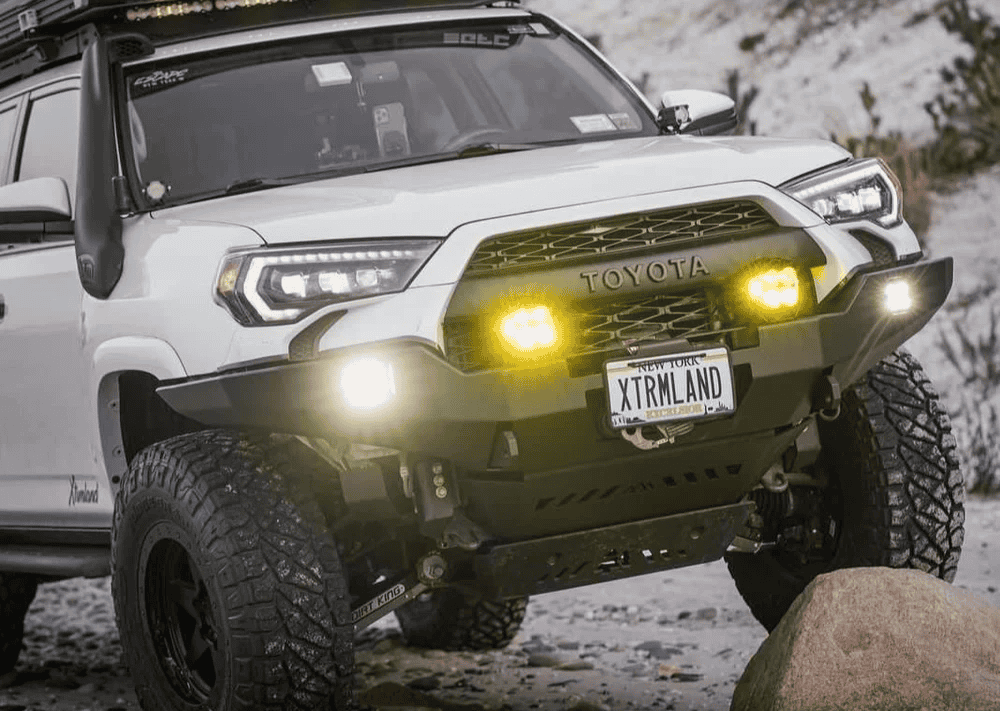Overland Vehicles

Ask ten drivers what defines the fastest off road car and you will hear different answers, but the physics are constant. Power to weight sets acceleration, gearing translates power to ground speed, and traction makes the math real. Long travel suspension keeps tires in contact over chop, while precise damping prevents porpoising and bottoming that rob speed and control. Cooling for engine, transmission, and brakes keeps the pace sustainable, because heat fade is the quiet limiter in long desert or forest stages.
A big offroad vehicle can be quick when the package is balanced. Tire diameter affects effective gearing and contact patch, so a taller tire may add stability but can dull acceleration unless ratios are optimized. Unsprung mass matters; heavy wheels and tires punish damping and slow response. The right all terrain or desert tire earns more speed than a wider but softer compound that overheats. Aerodynamics is secondary below highway speeds, yet clean airflow for cooling and a calm underbody make a difference when dust, brush, and silt clog everything.
Raw output is only useful if the driveline survives abuse. All wheel drive or four wheel drive with a smart center strategy allows aggressive throttle without skating across whoops. Lockers can help in slower rock or ruts but may unsettle the chassis at pace; selectable systems let the driver choose. Close gear spacing keeps the engine in its power band, while a taller final drive secures higher top speed when the surface allows. Modern traction management with sensitive calibration can be faster than a heavy right foot.
Speed off pavement is a suspension story. Long travel geometry, quality coilovers or bypass shocks, hydraulic bumps, and correct spring rates raise the limit. Anti squat and roll center tuning keep the body composed so drivers can sight lines instead of fighting the wheel. The fastest off road vehicle is the one that keeps contact patches loaded evenly, avoids brake dive, and puts power down early without hop or skate. Alignment is not a set and forget task; toe, camber, and caster shift under compression and must be dialed for the ride height used at speed.
Tires are your only contract with the ground. For desert speed, a strong carcass and predictable slip angle beat outright grip that melts in heat. Brakes should be sized for repeated hard stops with pad compounds that keep bite when hot. Ducting and shields protect from debris while feeding cool air. Engine and transmission coolers placed for airflow and protected from rocks keep the pace repeatable across long stages.
The phrase fastest off road car often points to rally raid specials or unlimited class builds that sprint across open terrain. Trophy style trucks can exceed triple digit speeds on graded desert, pairing massive suspension travel with lightweight wheels and tuned V8 power. Meanwhile, a purpose built UTV can feel telepathic on tight tracks because of low mass and short wheelbase, even if its top speed is lower.
Big body SUVs and trucks can match pace when set up correctly. Longer wheelbase smooths whoops but needs careful damping to prevent oscillation. Added weight means more heat in brakes and fluids, so high capacity systems are non negotiable. The final result depends on the course: the fastest off road vehicle in dunes is not the same champion in rocky forest sections.
Chasing top speed is pointless if the vehicle is a handful. Real pace comes from predictability and repeatability. That requires data logging and methodical testing. Measure shock temps, tire temps, and lap segments. Adjust rebound and compression clicks, change tire pressures, and document changes. Driver ergonomics matter too. Supportive seating, a secure pedal box, and clear visibility reduce fatigue so drivers carry speed later into the day.
Now, take those principles and apply them to your own build. If your plan includes long highway approaches and fast dirt connectors, prioritize balanced gearing, heat capacity, and quiet cabin details. For a build centered on fast forest tracks, choose lighter wheels, sharper steering, and more progressive damping. When you are ready to translate ideas into a coherent package, explore our Overland rigs to see how complete systems thinking turns theory into travel speed.
For drivers who want professional setup around performance and reliability, our Custom overland upfit process aligns suspension, tires, protection, power, and interior with your terrain and payload. You can also learn more about our approach, shop, and handoff experience at Why choose OZK Customs.
A big offroad vehicle that feels calm at pace is not an accident. It is the sum of precise suspension, sane gearing, durable cooling, correct tires, and a cockpit that lets you focus. Share your routes, your payload, and your timeline, and we will help translate the fastest off road car lessons into a trustworthy rig that stays composed when the trail opens up.
Ready to turn speed theory into a reliable, all terrain build? Tell us how you drive, where you go, and what you carry. Our Fayetteville, Arkansas team will spec suspension, tires, gearing, power, and protection around your goals and deliver a tested result. Start your build consult now.
ADDRESS:
6159 E Huntsville Rd, Fayetteville, AR 72701
PHONE:
(479) 326-9200
EMAIL:
info@ozkvans.com